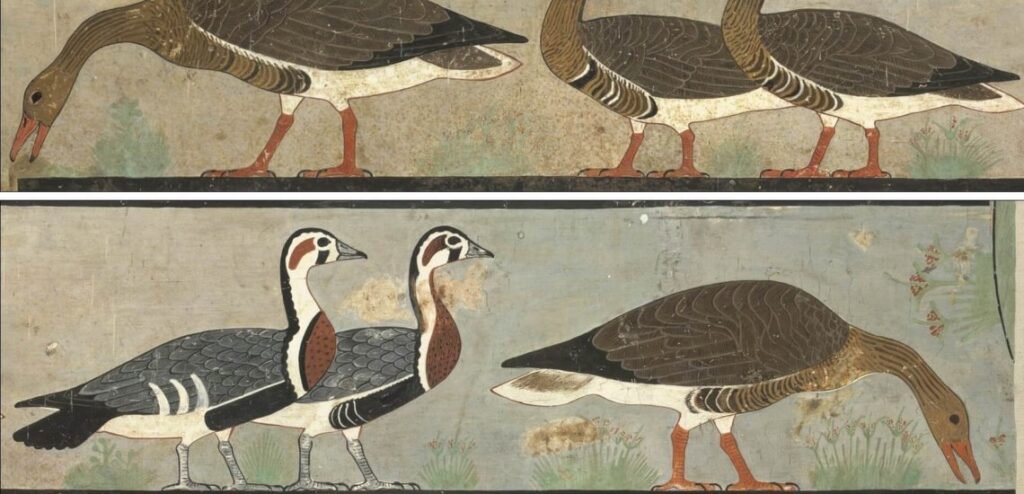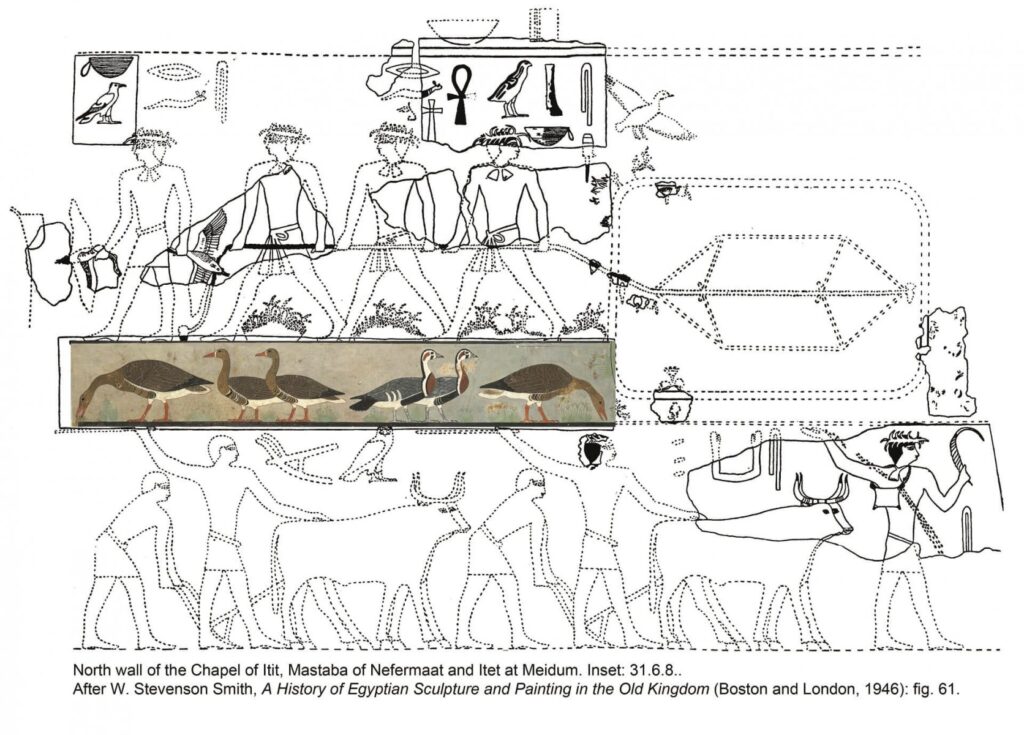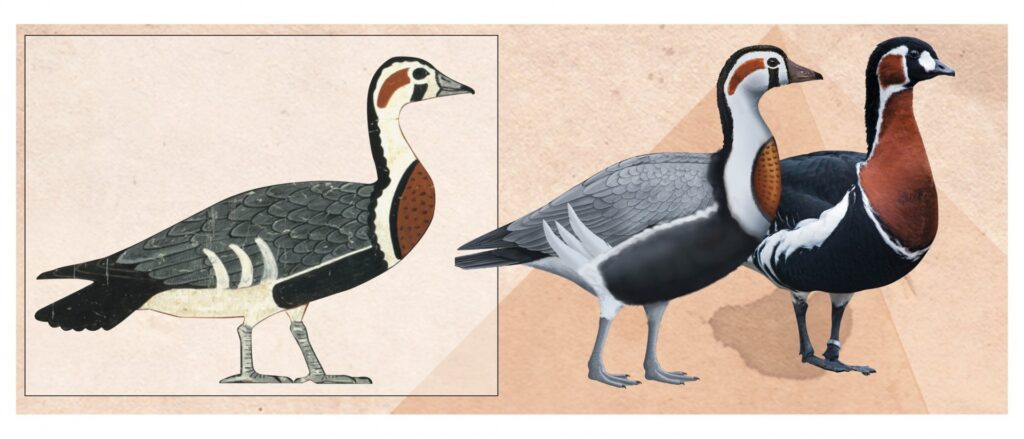Does this ancient Egyptian fresco depict an extinct goose species?

When ancient Egyptian artists painted strange but lifelike geese on the side a tomb 4,600 years ago, they could never have expected they would become the subject of rigorous modern scientific study. But are these geese an extinct species, or just a flight of artistic fancy? We ask the experts.
By Shaun Hurrell
One of the joys of exploring art is the challenge of understanding the artist’s original intention. Whether musing over a painting or a musical performance, the creative drive is always fascinating – often elusive – for both ancient and contemporary works. Mystery surrounds the moment of making, and will always shroud the thoughts of the Egyptian artists that painted the Meidum Geese 4600 years ago.
Considered a masterpiece and even dubbed ‘Ancient Egypt’s Mona Lisa’, the fresco was painted on the north wall of what would become the Tomb of Nefermaat and Itet, at Meidum, Egypt. We know that this pair were members of a royal family, so they could afford the most sought-after artists of the time, who “took great care in rendering the colours and textures of the birds’ feathers and even included serrated bills on the two geese bending to graze,” according the Metropolitan Museum of Art in New York, where a facsimile copy is shown.
One theory even goes so far as to say that the original painting is a fake – a reconstruction made at the time of discovery in 1871. What we can safely deduce, though, is that the artists did not expect the geese in their work to be subjected to the rigorous scientific criteria of modern taxonomy.
When Dr Anthony Romilio examined the painting, a speckle-breasted goose caught his eye. “The strange but beautiful bird was quite unlike modern Red-breasted Geese [Branta ruficollis], with distinct, bold colours and patterns on its body, face, breast, wings and legs,” said the University of Queensland researcher. “Artistic licence could account for the differences with modern geese, but artworks from this site have extremely realistic depictions of other birds and mammals.” This revelation sparked a new piece of research that speculates the birds depicted are a distinct (and now-extinct) species.

The Tobias Criteria
To pursue this possibility, Dr Romilio applied the ‘Tobias criteria’ to assess the unknown geese, along with other geese in the fresco. Co-developed by BirdLife’s taxonomy expert Dr Nigel Collar and Dr Joe Tobias in 2010 to provide a more consistent way of recognising species, the Tobias method is a fast, reliable, points-based system that assesses differing characteristics of an animal. The method is central to the taxonomic classification of species that underlies BirdLife’s work on the Red List, and species are the most fundamental unit of biology, conservation and environmental legislation.
“The Tobias method is a highly effective method in identifying species, using quantitative measurements of key bird features,” Romilio says, “and greatly strengthens the value of the information to zoological and ecological science.”
The results of Romilio’s investigation showed that while the other geese depicted were highly consistent with two known species (Greylag Anser anser and Greater White-fronted Anser albifrons – both notably not found in Egypt today), the speckle-breasted bird was similar to, but a very poor match with the Red-breasted Goose.

This study of course raises many questions. If the geese in the mural were indeed Red-breasted, why are they so different – with mostly white necks – from the species we know today, when the other geese have been depicted so accurately? Was it perhaps a copy of a copy of a copy, becoming less accurate as artistic licence grew? Or could it conceivably represent a globally extinct species, matching the bones of one found on Crete? And ultimately, what were the artists thinking whilst they painted? One thing’s for sure – it’s a highly original application of the Tobias criteria and shows the value of art far beyond the original intention of the artists.
“Art provides cultural insight, but also a valuable, graphical record of animals unknown today,” says Romilio, whose work also looks at other potentially extinct species, such as the Aurochs, a predecessor of modern cattle. “I see it also as a reminder of humans’ influence over the survival of species that are with us today.”
Assessing ‘Meidum Geese’ species identification with the ‘Tobias criteria’ was published in the Journal of Archaeological Science.
“Art provides cultural insight, but also a valuable, graphical record of animals unknown today,”Tobias Romilio
Stay up to date
Sign up to receive the latest bird conservation news. You’ll also receive updates about our projects, science and other ways to get involved including fundraising.
Thank you for your support, we are committed to protecting your personal information and privacy. For more information on how we use your data, please see our Privacy Policy. You can unsubscribe from emails at any time by using the link in the footer of any email from us.

